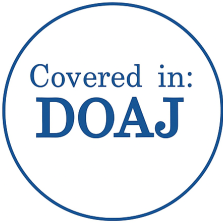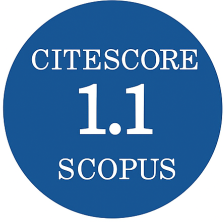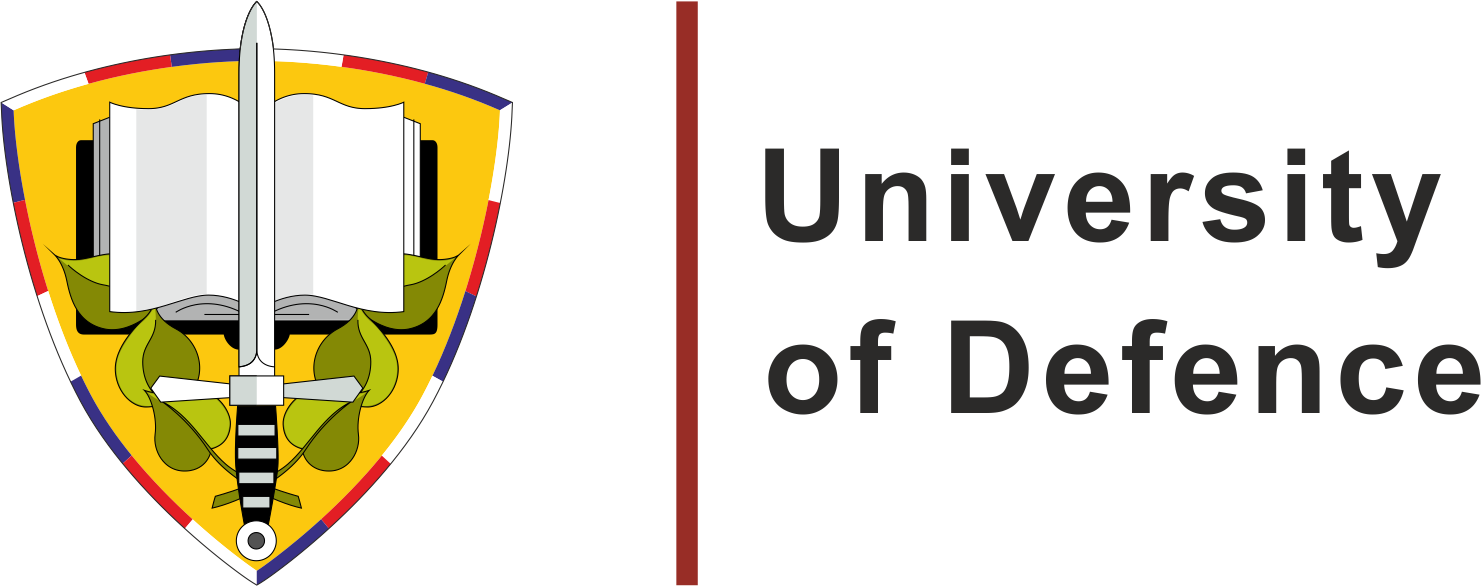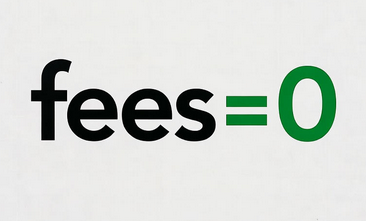Influence of Double Cone Liner Shape on Jet Characteristics of Shaped Charge
DOI:
https://doi.org/10.3849/aimt.01921Keywords:
shaped charge, double cone liner, jet characteristics, apex angle, base angleAbstract
This article deals with a simulation of the influence of double cone liner shape on the jet characteristics of a small-sized shaped charge by ANSYS AUTODYN software. The results prove that, with a smaller apex angle, a smaller base angle, and a larger distance from the top of the liner to the transition position of the cone angle, the jet velocity and jet length will be larger. For a 40 mm shaped charge used in the study, a double cone liner with shape parameters including an apex angle of 40°, a base angle of 60°, and a cone angle transition position from the top of the liner at a value equal to 0.3 times, the base diameter is predicted to provide the best jet performance. The research results are the basis for evaluating the influence of liner shape on the jet formation process and designing a double cone liner for small-sized shaped charges.
References
WALTERS, W.P. and J. ZUKAS. Fundamentals of Shaped Charge. New York: Wiley Interscience Publication, 1989. ISBN 978-0-471-62172-0.
SIMON, J. The Effect of Explosive Detonation Characteristics on Shaped Charge Performance [online]. Maryland: Ballistic Research Laboratories Aberdeen Proving Ground, 1974 [viewed 2024-02-23]. Available from: https://apps.dtic.mil/sti/pdfs/AD0785680.pdf
ELSHENAWY, T., G.M. ABDO and A. ELBEIH. Effect of Explosives Charges Types on the Jet Characteristics, Penetration Performance and Patterns of Shaped Charges. Scientific Reports, 2024, 14, 26282. https://doi.org/10.1038/s41598-024-75727-0
NAN, Y.X., J. JIANG, S. WANG, J.B. MEN and D.P. CHEN. Penetration Capability of Shaped Charge Loaded with Different High-Energy Explosives. In: 28th International Symposium on Ballistics. Atlanta, 2014, pp. 1039–1044. ISBN 978-1-60595-149-2.
WANG, Z., J.W. JIANG, S.Y. WANG and H. LIU. Jet Formation and Penetration Study of Double-Layer Shaped Charge [online]. Journal of Energetic Materials, 2017, 36(2), pp. 152–168 [viewed 2024-12-12]. https://doi.org/10.1080/07370652.2017.1326987
MINH DO, V., M. THAI LE, X. SON BUI, H. NGUYEN PHAM and P. LINH NGUYEN. Influence of Wave Shaper Position on Jet Formation and Penetration Depth. Advances in Military Technology, 2020, 15(1), pp. 355–364. https://doi.org/10.3849/aimt.01385
LIANG, Z., J. JIN, X. GUO and Q. QI. Numerical Simulation of the Effect of Conical-Disc Wave-Shaper on Jet Performance. In: 2024 2nd International Conference on Signal Processing and Intelligent Computing. Guangzhou: IEEE, 2024. https://doi.org/10.1109/SPIC62469.2024.10691582
HELD, M. Liners for Shaped Charges [online]. Journal of Battlefield Technology, 2001, 4(3) [viewed 2024-12-18]. Available from: https://cdn.preterhuman.net/texts/terrorism_and_pyrotechnics/explosives/Shaped_Charges_Penetrators/Liners%20for%20Shaped%20Charges%20by%20Manfred%20Held%20(2001).pdf
BOURNE, B., K.G. COWAN and J.P. CURTIS. Shaped Charge Warheads Containing Low Melt Energy Metal Liners. In: Proceedings of the 19th International Symposium on Ballistics [online]. 2001, pp. 583–590 [viewed 2024-12-18]. Available from: http://www.ciar.org/ttk/mbt/papers/symp_19/WM05_583.pdf
WANG, T.F. and H.R. ZHU. Copper-Tungsten Shaped Charge Liner and its Jet. Propellants, Explosives, Pyrotechnics, 1996, 21(4), pp. 193–195. https://doi.org/10.1002/prep.19960210406
SADRI SEN, I. and A. GOKHAN. An Application of Explosive Metal Forming in Military Field: The Relationship Between Shaped Charge Jet Formation and Thickness Variation Along Liner Length of Conical Copper Liner. Arabian Journal for Science and Engineering, 2013, 38(12), pp. 3551–3562. https://doi.org/10.1007/s13369-013-0642-x
KANG, Y. and J. JEON. Finite Element Analysis of the Impact of Liner Thickness and Hydrodynamic Limit on the Penetration Depth of a Shaped Charge Warhead. Journal of Mechanical Science and Technology, 2018, 32(12), pp. 5797–5805. https://doi.org/10.1007/s12206-018-1127-3
HONG, B., W. LI, Y. LI, Z. GUO and B. YAN. Jet Formation and Penetration Performance of a Double-layer Charge Liner with Chemically-Deposited Tungsten as the Inner Liner. Defence Technology, 2024, 33, pp. 374–385. https://doi.org/10.1016/j.dt.2023.08.016
COMBRINCK, M.L., T. GADAL, A. HARGREAVES and J.E. MARTIN. Velocity Tracking of Shaped Charge Wire Formation and Propagation Towards the Target. Journal of Energetic Materials, 2024, 42(3), pp. 362–381. https://doi.org/10.1080/07370652.2022.2079772
KEMMOUKHE, H., S. SAVIĆ, S. TERZIĆ, M. LISOV, N. REZGUI and H. SEDRA. Improvement of the Shaped Charge Jet Penetration Capability by Modifying the Liner Form Using AUTODYN-2D. Scientific Technical Review, 2019, 69(1), pp. 10–15. https://doi.org/10.5937/str1901010K
SAYED, E.E.E., T.A. ELSHENAWY, M.A. SHAKER and A.M. RIAD. Influence of Different Shaped Charge Parameters on Jet Penetration into Metallic Target. Journal of Physics: Conference Series, 2022, 2299, 012016. https://doi.org/10.1088/1742-6596/2299/1/012016
LI, H., P. LI, H. DUAN and Z. ZHANG. Study on the Jet Formation and Penetration Performance of Shaped Charge with Untypical Double-Cone Titanium Liner. Journal of Physics: Conference Series, 2023, 2599(1), 012028. https://doi.org/10.1088/1742-6596/2599/1/012028
AUTODYN Theory Manual [online]. 2005 [viewed 2024-11-12]. Available from: https://fr.scribd.com/document/493503559/Autodyn-Theory-Manual
GÜREL, E. Modeling and Simulation of Shaped Charges [Master’s Thesis] [online]. Ankara: Middle East Technical University, 2009 [viewed 2024-11-12]. Available from: https://etd.lib.metu.edu.tr/upload/12610830/index.pdf
ANSYS Autodyn User’s Manual [online]. 2018 [viewed 2024-12-12]. Available from: https://fr.scribd.com/document/453341462/ANSYS-Autodyn-Users-Manual-pdf
Downloads
Published
Issue
Section
Categories
License
Copyright (c) 2025 Advances in Military Technology

This work is licensed under a Creative Commons Attribution-NonCommercial 4.0 International License.
Authors who publish with this journal agree to the following terms:
1. Authors retain copyright and grant the journal right of first publication with the work simultaneously licensed under a Creative Commons Attribution License that allows others to share the work with an acknowledgement of the work's authorship and initial publication in this journal.
2. Authors are able to enter into separate, additional contractual arrangements for the non-exclusive distribution of the journal's published version of the work (e.g., post it to an institutional repository or publish it in a book), with an acknowledgement of its initial publication in this journal.
3. Authors are permitted and encouraged to post their work online (e.g., in institutional repositories or on their website) prior to and during the submission process, as it can lead to productive exchanges, as well as earlier and greater citation of published work.
Users can use, reuse and build upon the material published in the journal for any purpose, even commercially.






